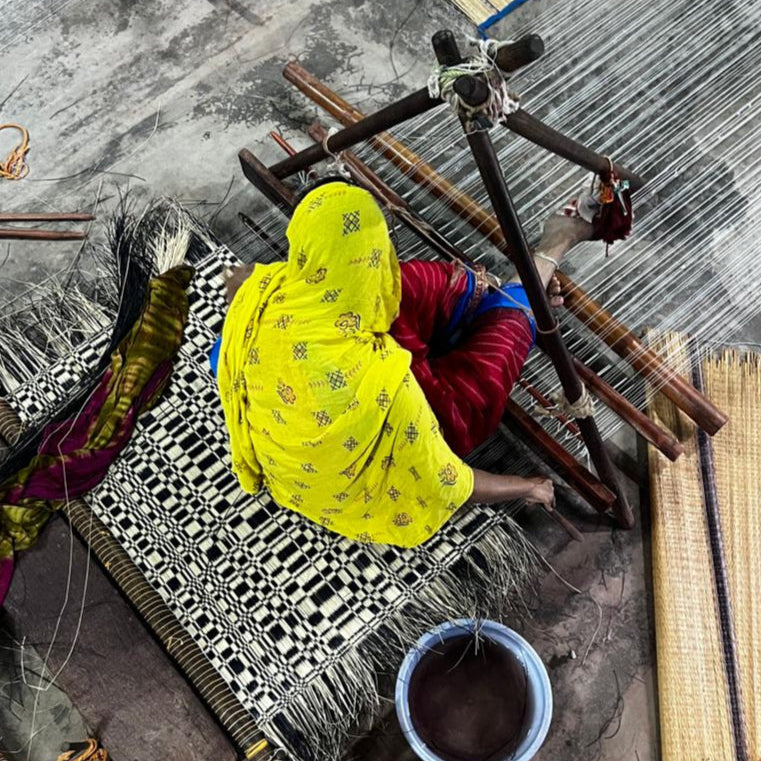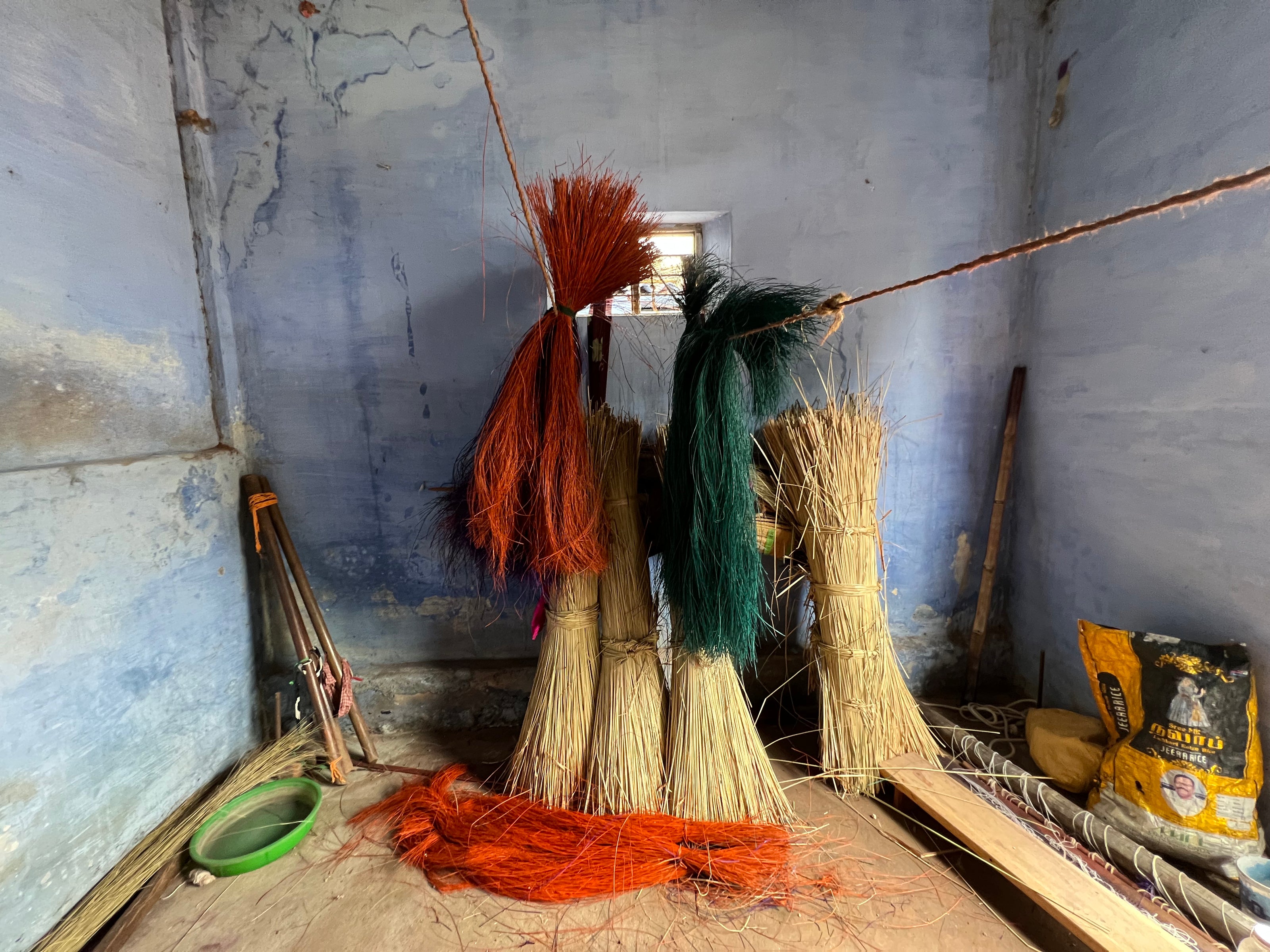Korai Grass Mat Weavers of Tamilnadu
People and Place
The Mats are woven by all women from Labbai and rowther muslin communities in Pathamadai village in tirunelveli district in Tamilnadu . This craft was once male dominant livelihood but now it’s only women who practice it. The mats are called as “Pathamadai pai”
Making
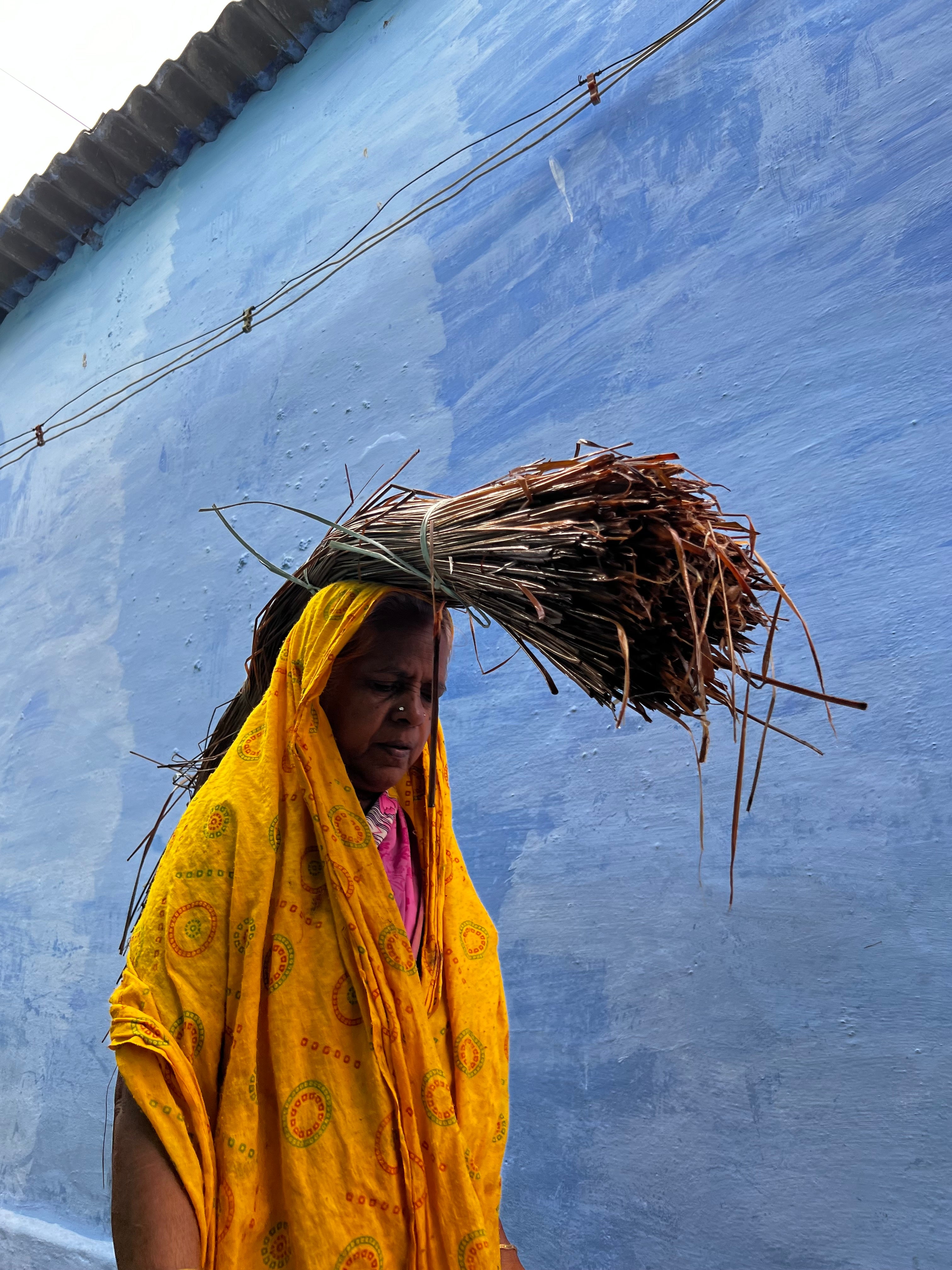
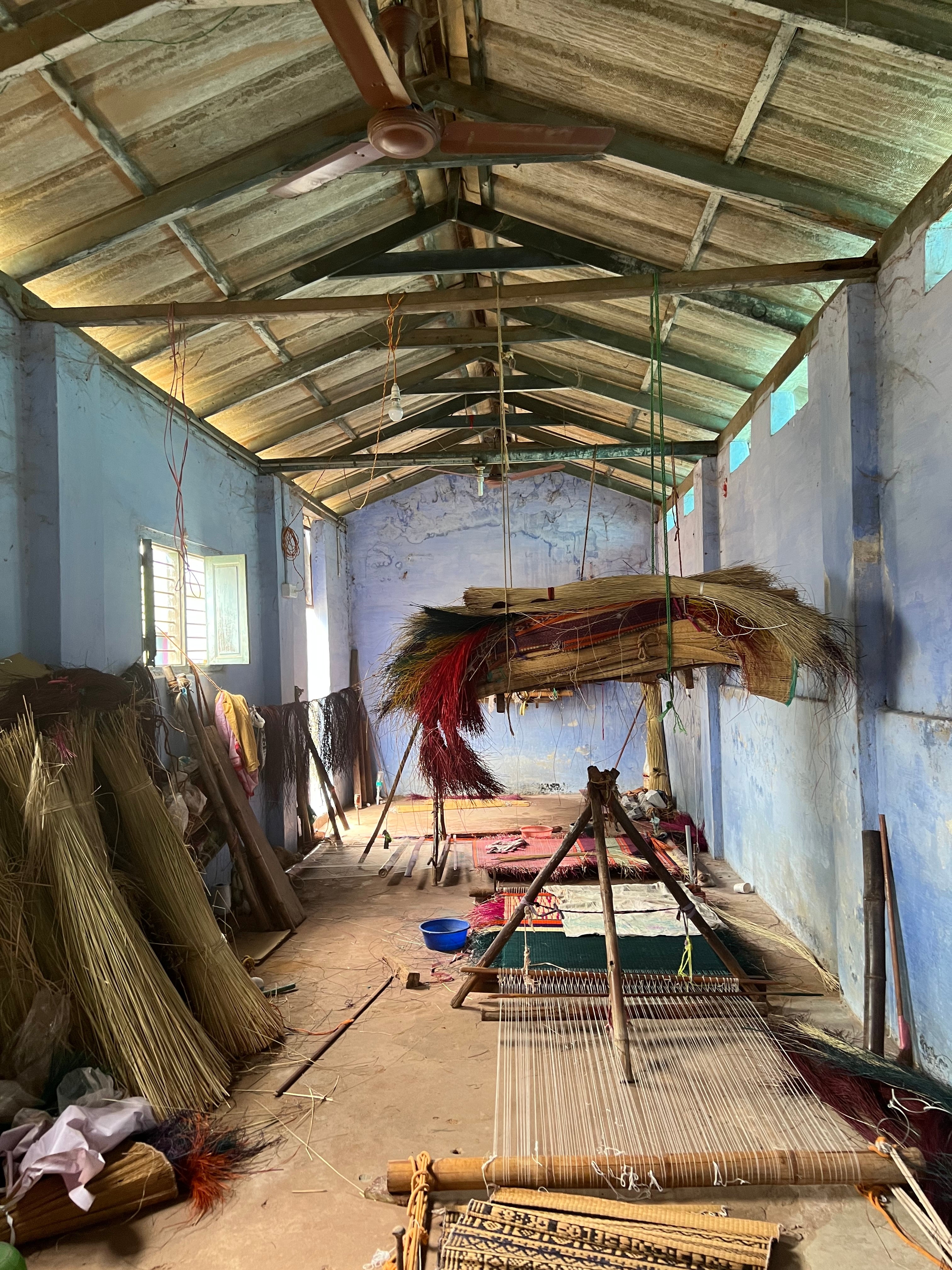
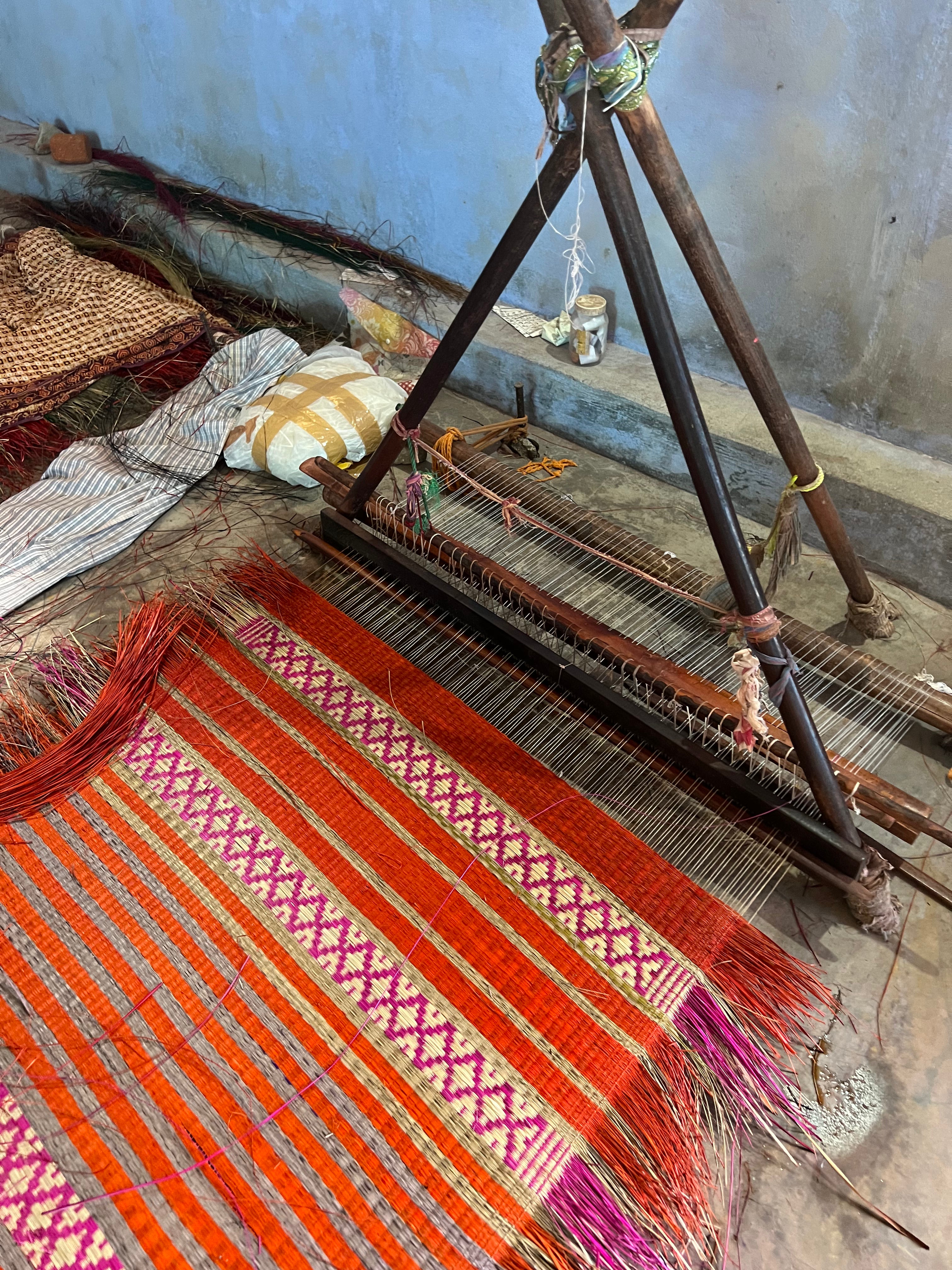
Pre Process
Once the grass is harvested. It is dried till it becomes brown and then soaked in water to for 3 days then taken out, washed and soaked again this makes the fibre soft. Once the grass is taken out of the water the waste is separated from the fibre with the help of a sharp knife. The outer covering of the grass is what is used for weaving while the pith will be discarded. The skin and the tough outer layer is also removed and the inner layer split into fine strands for the weft, varying in sizes from 1/10 to 1/20 of an inch.
Warping, loom set up and weaving
One warp is set for each individual mat. The weaver sits on top of the warp threads with legs stretched and feet crossed at the angle. With one foot hanging in a cotton sling that hangs from the top of the tripod. To weave these mats they shift one foot out of the cotton sling and press down a thick bamboo cylinder that rolls up and down the warp and helps in changing the shed. Ones the shed opens, they pick one strand of grass into the eye of a long flat wooden needle that functions as a shuttle. Each strand of grass is picked, sent across and then beaten with the reed. The loom is in motion unlike other looms. The weaver moves forward and sits not the woven part to continue weaving the mat. The weaver engages her whole body, her feet and hands in this process.
Design
The artisans have 2 different technique to make designs and weave. One way is each warp yarn is hand picked each time to create a design. It is called “Adapu” which is more like handpicked jacquard. This gives us many possible ways to create designs but its a very tedious process and take a very long time. Another way is that the design of the mat is fixed and the warp threads are picked in a pattern and hung on rod which is attached to the tripod which moved with the loom. This is an easier way to weave but design would be constant through out the mat.
Finishing
Before the mat is taken out of the loom the woven portions are held between the palm and the grass is moved densely together to compact and completely hide the warp. Light must not pass through the mat when it is held up. Packing of the weft is important process that gives longitivtiy for the mats.The warp is cut at one end while the cut warp threads are joint to new thread to start the next warp. Either The sides of the grass is cut and hand stithed with a needle and cotton thread to bind the edges or a long strip of fabric is stitched on sides so the warp doesnt unravel. At last a pumice stone with smooth surface is rubbed slowly to polish the mat.
